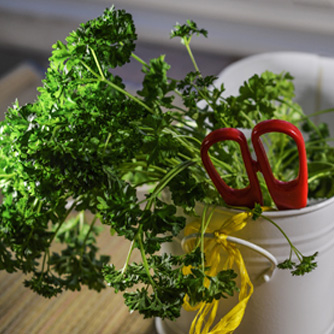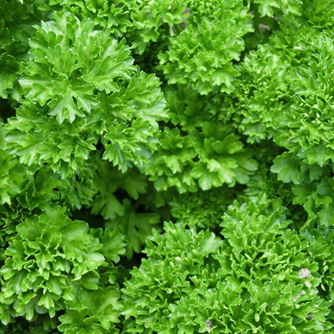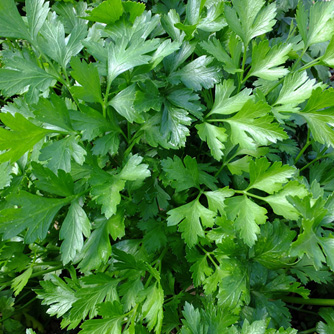Parsley
BackParsley would have to be the most popular herb in cooking all around the world. It is used fresh, dried or for garnishing all manner of foods including soups, salads, stir fries and stews. The two main varieties are common curly leaf parsley and flat leaf or Italian parsley. Both are a rich source of iron and vitamin plus chewing on either will counteract the effects of garlic on the breath. Now that’s a handy herb!
Parsley is a biennial plant meaning plants usually go to seed in their second year and then die. However they will often go to seed sooner if they dry out so many gardeners view them more as an annual plant.
How To Grow Parsley
Parsley grows best in a full sun position with plenty of moisture. In areas with hot dry summers it’ll be happier in a position which provides some afternoon shade. It will tolerate poor soils but perform much better in rich fertile ground. Improve your soil by adding compost and manures before planting or sowing.
If starting from seed sow the seed direct in soil from spring through to early autumn. Parsley is slow to germinate and it can be 3-4 weeks before the seedlings poke their heads through the soil. To speed up the germination process some gardeners soak seeds overnight in regular water or pour boiling water over the seeds after sowing. Alternatively purchase seedlings or young plants from the nursery and plant them out taking care not to disturb their roots. Don’t forget to mulch and water in with OCP eco-seaweed.
As mentioned at the beginning parsley can bolt early to seed if it dries out so keep the water up during hot water especially with container plants.

Freshly picked parsley
Fertilising & Maintenance
Boost soil nutrients at the time of planting by applying some compost, manure or certified organic pelletised fertiliser. Top this up each year in spring. Every fortnight throughout the growing season apply a mixture of OCP eco-seaweed and OCP eco-aminogro to guarantee a continual supply of new flavoursome leaves for your cooking.
Parsley requires little ongoing maintenance. Simply remove old leaves as they yellow and pick off developing flower stalks to delay the plant going to seed for as long as possible.
Harvesting
Take the outer leaves at any time when you need them. When picking be sure to take the entire leaf (including the stalk) picking from the point where it joins the base of the plant.
Harvesting regularly will encourage the plant to produce more leaves and create a thicker plant.

Curly leaf parsley
Pest and Diseases of Parsley
Parsley is relatively free from pests and diseases but the following guys can be a problem at times:
- Snails and slugs - protect seedlings with OCP eco-shield.
- Caterpillars may also take a liking to your parsley but can be picked off by hand before they do too much damage. You can also spray with OCP eco-caterpillar killer.
- Young plants bolting to seed is caused by plants drying out or too much root disturbance when they were first planted out.
- Sapsuckers like whitefly, mites, scale and aphids can sometimes appear but these are easily controlled with an organic insecticide.
- Root-knot nematodes can attack the roots resulting in poor growth, yellowing leaves and plants which wilt easily. Treat the soil with OCP eco-nemguard.

Italian, or flat leaf, parsley


